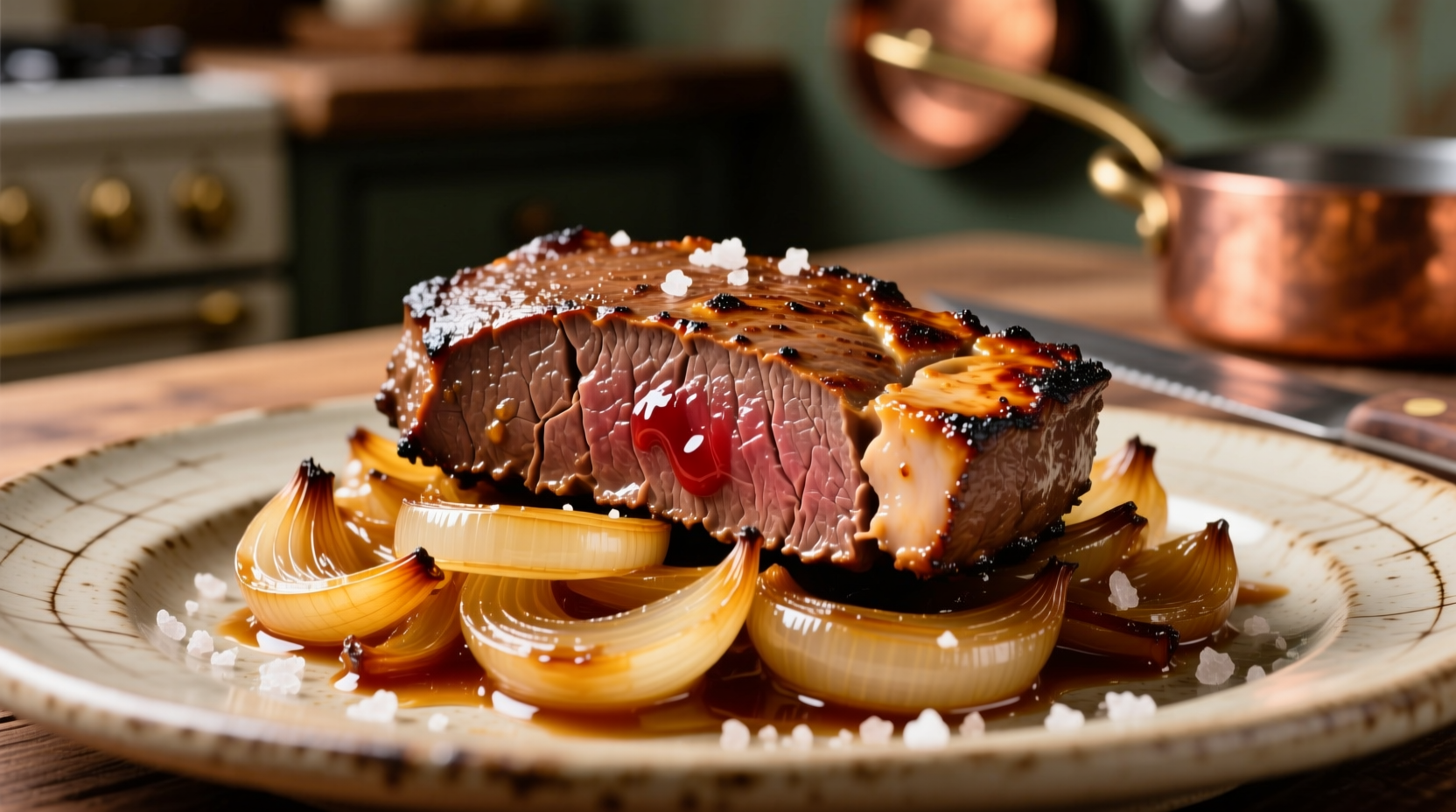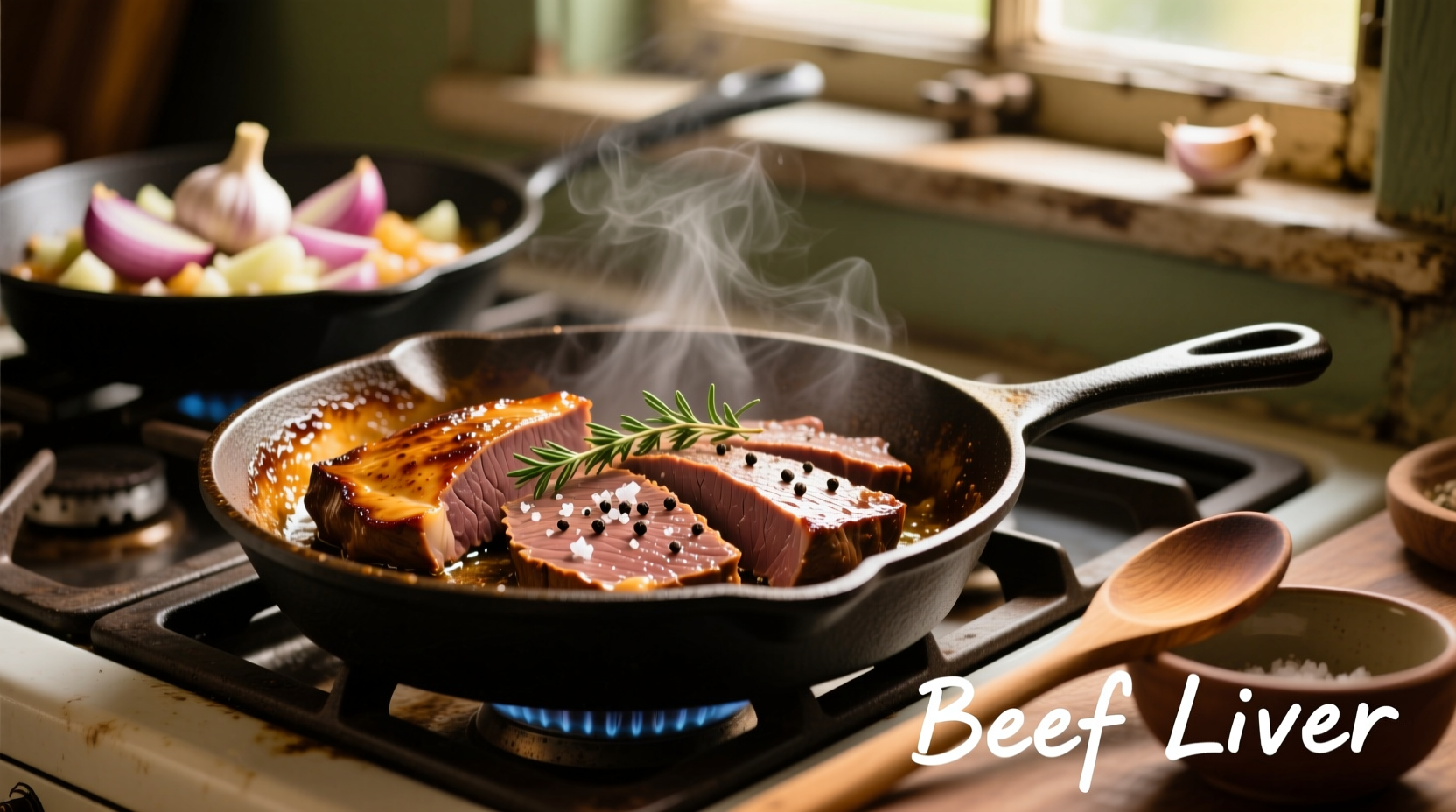Beef liver, when properly prepared, offers a rich, satisfying flavor and exceptional nutritional value. The secret to perfect beef liver lies in proper preparation, precise cooking times, and strategic flavor pairing. Follow these evidence-based techniques to achieve restaurant-quality results in your home kitchen every time you cook this nutrient-dense organ meat.
Why Beef Liver Deserves a Place in Your Kitchen
Often overlooked but nutritionally exceptional, beef liver packs more vitamin A, iron, and B vitamins per ounce than almost any other food. According to USDA FoodData Central, a 3-ounce serving of cooked beef liver contains 27,000 IU of vitamin A (540% of daily value), 5.2 mg of iron (29% of daily value), and 70.7 mcg of vitamin B12 (2,945% of daily value). This nutritional powerhouse supports eye health, energy production, and blood formation when prepared correctly.

Essential Preparation Techniques
Proper preparation makes the critical difference between enjoyable and off-putting liver. Professional chefs universally recommend soaking liver in acidic liquid before cooking to mellow its strong flavor profile. The American Culinary Federation confirms that soaking beef liver in buttermilk or milk with lemon juice for 2-4 hours significantly reduces the metallic taste while improving tenderness. This technique works because the lactic acid and calcium in dairy products help break down the liver's connective tissue and neutralize strong flavors.
Cooking Method Comparison
| Cooking Method | Ideal Thickness | Cooking Time | Best For | Texture Result |
|---|---|---|---|---|
| Pan-searing | ¼-½ inch | 3-4 minutes per side | Beginners | Crispy exterior, tender interior |
| Grilling | ½ inch | 2-3 minutes per side | Summer cooking | Smoky flavor, firm texture |
| Thin slicing | ⅛ inch | 60-90 seconds total | Stir-fries | Delicate, melt-in-mouth |
| Braising | 1 inch cubes | 1.5-2 hours | Hearty dishes | Fork-tender, rich flavor |
Step-by-Step Perfect Beef Liver Guide
Step 1: Selection and Preparation
Choose bright red, firm liver with no dark spots or strong odor. Slice into ¼-inch thick pieces - thicker cuts easily overcook to toughness. Soak in buttermilk with 1 tablespoon lemon juice per cup for 2-4 hours in the refrigerator.
Step 2: Drying and Seasoning
Remove liver from soak and pat completely dry with paper towels - moisture is the enemy of proper searing. Season lightly with salt and pepper just before cooking. Avoid heavy seasoning that masks the liver's natural flavor.
Step 3: High-Heat Cooking
Heat cast iron skillet over medium-high heat until smoking hot. Add 1 tablespoon of high-smoke point oil (avocado or grapeseed). Place liver in single layer without crowding. Cook undisturbed for 2-3 minutes until golden brown crust forms.
Step 4: Perfect Doneness
Flip and cook 1-2 minutes more for medium-rare (130-135°F internal temperature). Never cook beyond medium (140°F) - overcooked liver becomes tough and grainy. The FDA Food Code recommends cooking liver to minimum internal temperature of 145°F with 3-minute rest time for safety, but many chefs prefer slightly lower temperatures for optimal texture.
Flavor Pairing Strategies
Traditional pairings like onions and bacon work because they balance liver's intensity with sweetness and saltiness. For contemporary approaches, try these professional combinations:
- Caramelized onions - Their natural sweetness counters liver's metallic notes
- Bacon or pancetta - Adds saltiness that complements without overwhelming
- Acidic elements - A squeeze of lemon or apple cider vinegar brightens rich flavor
- Earthy herbs - Thyme, rosemary, or sage enhance without dominating
- Fruit compotes - Fig or apple compote creates delightful sweet-savory contrast
Common Mistakes and Solutions
Mistake: Tough, rubbery texture
Solution: Overcooking is the primary culprit. Use a meat thermometer and remove liver at 130-135°F for medium-rare. Remember that carryover cooking will raise temperature 5-10 degrees after removal from heat.
Mistake: Overpowering metallic taste
Solution: Extend soaking time in buttermilk to 4 hours and add 1 tablespoon of lemon juice per cup. Adding a splash of Worcestershire sauce during cooking also helps mask metallic notes.
Mistake: Liver sticks to the pan
Solution: Ensure your pan is properly preheated and the liver is thoroughly dried before cooking. Don't move the liver until it naturally releases from the pan surface.
Storage and Leftover Guidance
Store raw liver in its original packaging in the coldest part of your refrigerator for no more than 1-2 days. Cooked liver keeps for 3-4 days refrigerated. When reheating, use gentle methods like warming in a covered skillet over low heat with a splash of broth to maintain moisture. Avoid microwaving, which makes liver rubbery.
How can I reduce the strong flavor of beef liver?
Soak liver in buttermilk or milk with lemon juice for 2-4 hours before cooking. The lactic acid neutralizes strong flavors while improving tenderness. Adding acidic elements like lemon juice or apple cider vinegar during cooking also helps balance the flavor profile.
What's the ideal thickness for cooking beef liver?
¼-inch thickness works best for pan-searing. Thinner slices (⅛ inch) are ideal for quick stir-fries, while thicker cuts (½ inch) work for grilling. Uniform thickness ensures even cooking without overcooking the edges while the center remains undercooked.
How do I know when beef liver is perfectly cooked?
Use a meat thermometer - remove liver from heat at 130-135°F for medium-rare. Visually, the exterior should have a rich brown crust while the interior remains slightly pink. Overcooked liver turns completely brown and becomes tough and grainy.
What are the best side dishes to serve with beef liver?
Classic pairings include mashed potatoes, roasted root vegetables, or buttered egg noodles. The starches help balance liver's richness. For contemporary options, try it with roasted Brussels sprouts, creamy polenta, or a simple green salad with vinaigrette to cut through the richness.
Can I freeze cooked beef liver?
Yes, cooked beef liver freezes well for up to 3 months. Cool completely, then store in an airtight container with a layer of broth or gravy to maintain moisture. Thaw overnight in the refrigerator and reheat gently in a covered skillet over low heat to preserve texture.











 浙公网安备
33010002000092号
浙公网安备
33010002000092号 浙B2-20120091-4
浙B2-20120091-4